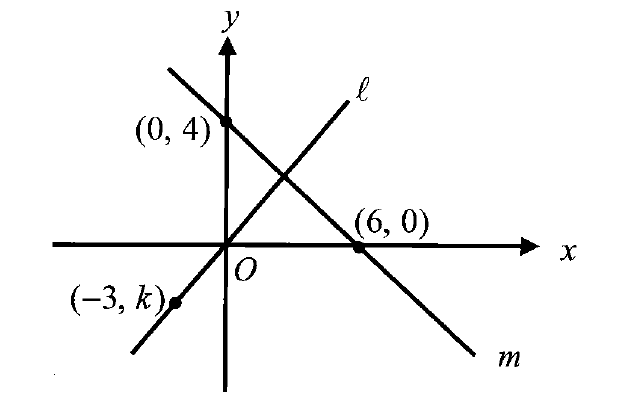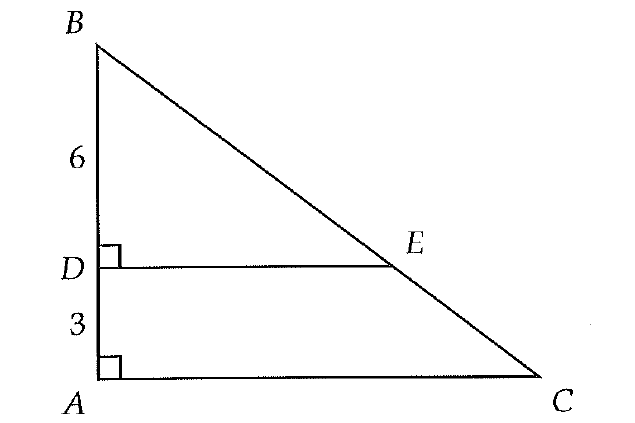REFLECTING IN THE COORDINATE PLANE
A point on a coordinate plane can be reflected across an axis. The reflection is located on the opposite side of the axis, at the same distance from the axis.
Example 1 :
Graph (3, −2). Then fold your coordinate plane along the y-axis and find the reflection of (3, −2). Record the coordinates of the new point in the table.
Solution :
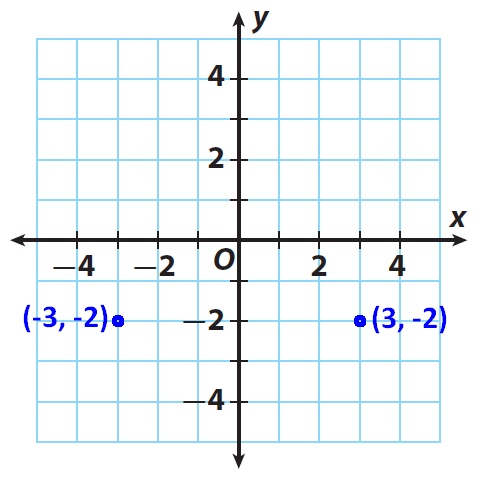
Example 2 :
Graph (3, −2). Then fold your coordinate plane along the x-axis and find the reflection of (3, −2). Record the coordinates of the new point in the table.
Solution :
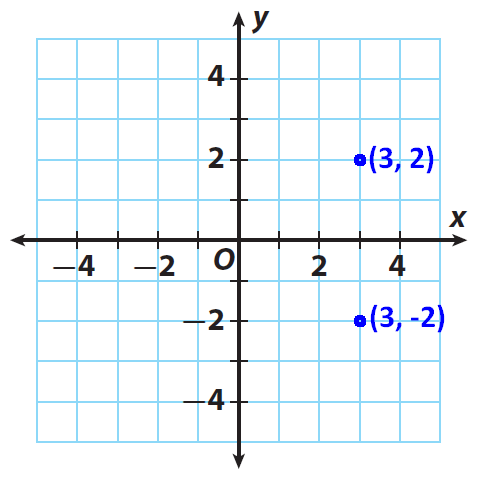
Based on the above examples, answer the question given below.
Question :
What is the relationship between the coordinates of a point and the coordinates of its reflection across each axis ?
Answer :
Across y-axis :
Opposite x-coordinate and same y-coordinate as the original point.
Across x-axis :
Same x-coordinate and opposite y-coordinate as the original point
Now, let us look at the rules o reflection.
Rules on finding reflected image
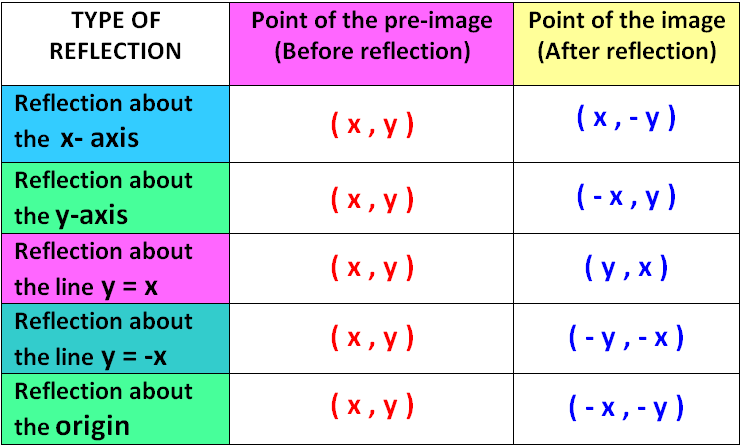
Reflection About the X-Axis
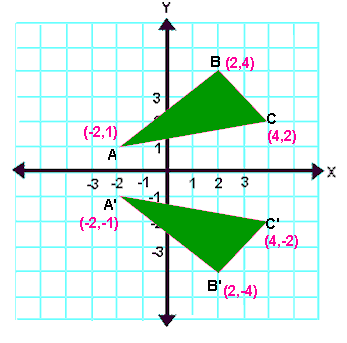
Reflection About the Y-Axis
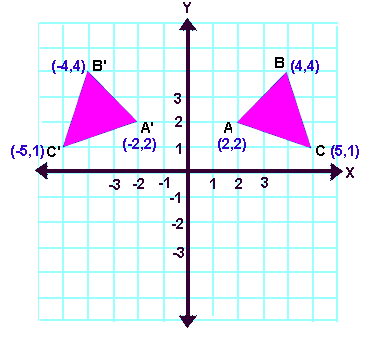
Reflection About the Y = X
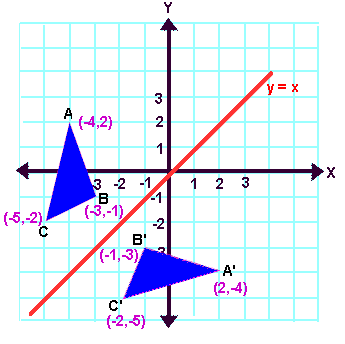
Once students understand the rules which they have to apply for reflection transformation, they can easily make reflection -transformation of a figure.
For example, if we are going to make reflection transformation of the point (2,3) about x-axis, after transformation, the point would be (2,-3). Here the rule we have applied is (x, y) ----> (x, -y).
So we get (2,3) ----> (2,-3).
Let us consider the following example to have better understanding of reflection.
Question :
Let A (-2, 1), B (2, 4) and (4, 2) be the three vertices of a triangle. If this triangle is reflected about x-axis, what will be the new vertices A' , B' and C' ?
Answer :
Step 1 :
First we have to know the correct rule that we have to apply in this problem.
Step 2 :
Here triangle is reflected about x - axis. So the rule that we have to apply here is (x , y) -------> (x , -y)
Step 3 :
Based on the rule given in step 1, we have to find the vertices of the reflected triangle A'B'C'
Step 4 :
(x , y) ----> (x , -y)
A(-2, 1) ----> A'(-2, -1)
B(2, 4) ----> B'(2, -4)
C(4, 2) ----> C'(4, -2)
Step 5 :
Vertices of the reflected triangle are
A'(-2, -1), B(2, -4) and C'(4, -2)
Reflection Over Any Line
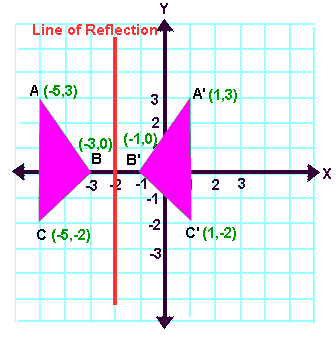
When we look at the above figure, it is very clear that each point of a reflected image A'B'C' is at the same distance from the line of reflection as the corresponding point of the original figure.
In other words, the line x = -2 (line of reflection) lies directly in the middle between the original figure and its image.
And also, the line x = -2 (line of reflection) is the perpendicular bisector of the segment joining any point to its image.
Students can keep this idea in mind when they are working with lines of reflections which are neither the x-axis nor the y-axis.
Kindly mail your feedback to v4formath@gmail.com
We always appreciate your feedback.
©All rights reserved. onlinemath4all.com
Recent Articles
-
Digital SAT Math Problems and Solutions (Part - 106)
Feb 04, 25 08:16 AM
Digital SAT Math Problems and Solutions (Part - 106) -
SAT Math Resources (Videos, Concepts, Worksheets and More)
Feb 04, 25 08:15 AM
SAT Math Resources (Videos, Concepts, Worksheets and More) -
Digital SAT Math Problems and Solutions (Part - 107)
Feb 04, 25 08:11 AM
Digital SAT Math Problems and Solutions (Part - 107)
